A tardy post.
Several weeks back I, along with David Kilby, was fortunate to be asked to come help with an excavation in central New Mexico. The project was the brainchild of Robert Dello-Russo from the New Mexico Office of Archaeological Studies. Since funding is always an issue with this type of research, this was very much a volunteer-based project, bringing in archaeological professionals and skilled avocationals from around the state.
The project area is west of Socorro, New Mexico between two mountain ranges. There is a surprising amount of energetic water that comes from the mountains to the west, moving enormous amounts of sediment, and sometimes very large cobbles and pebbles. This has created a sort of geologic fan that covers the very old Paleoindian and other paleontological deposits. All of this is overlaid with several meters of fine silt making the targeted materials extremely difficult to access.
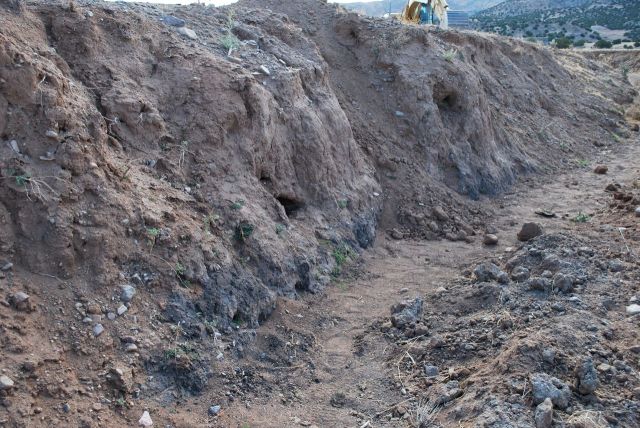
The Black Mat (associated with the Younger Dryas cooling episode ~10,900 B.P. to ~10,000 B.P.) as visible in the arroyo.
Evidence of a much wetter environment abounds in the arroyo cuts where Black Mats are revealed in the profiles. The area has produced Paleoindian tools, projectiles, and bone in the previous two seasons of work.
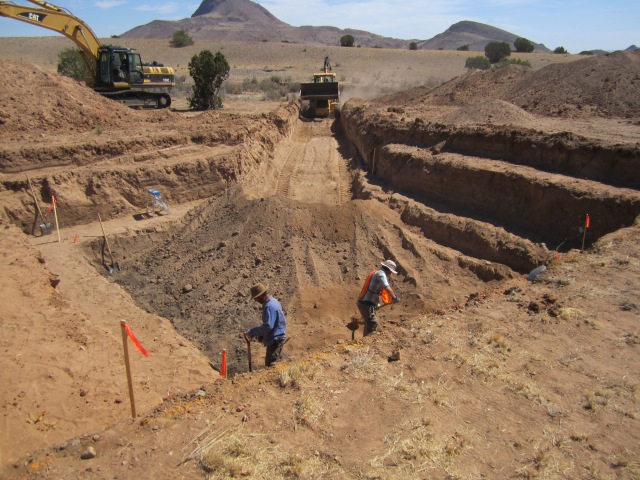
How to move 500 cu m of dirt in 3 days (Chris Merriman (L) and Ethan Ortega (R)).
With only a couple weeks to remove 3.5 – 4 meters of overburden, a heavy excavator and backhoe were required to uncover the site. This was done quickly and with remarkable precision as seen below.
Once the Black Mat strata was reached (ca. 10,900 B.P. to ca. 10,000 B.P), mechanical excavation ceased and 1 x 1 meter hand units were begun.
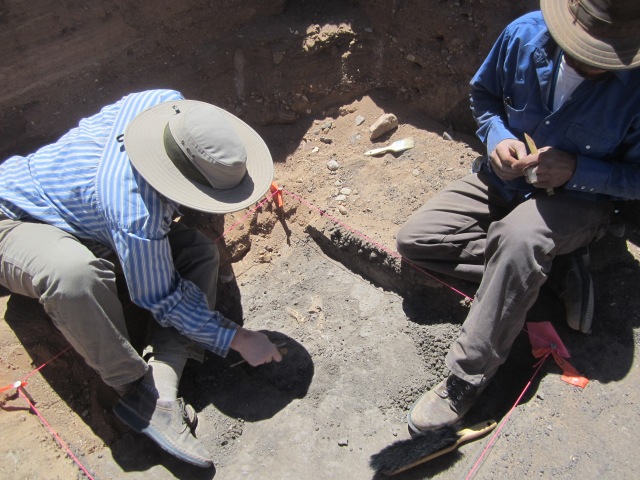
Stacey Bennett and Chris Merriman starting to uncover the bison innominate in Unit 5-1.
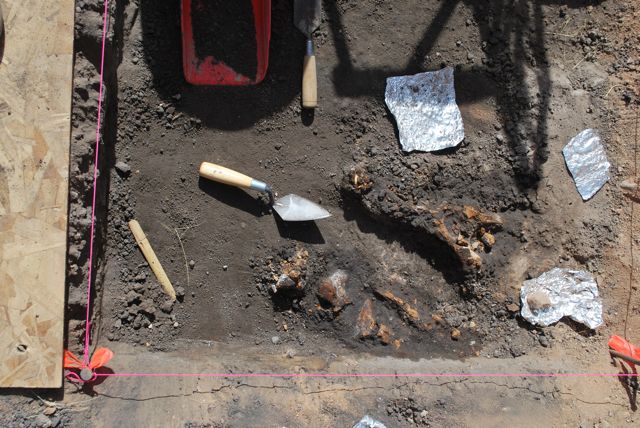 Bone was soon reached in the later Paleoindian level and intensive mapping began.
Bone was soon reached in the later Paleoindian level and intensive mapping began.
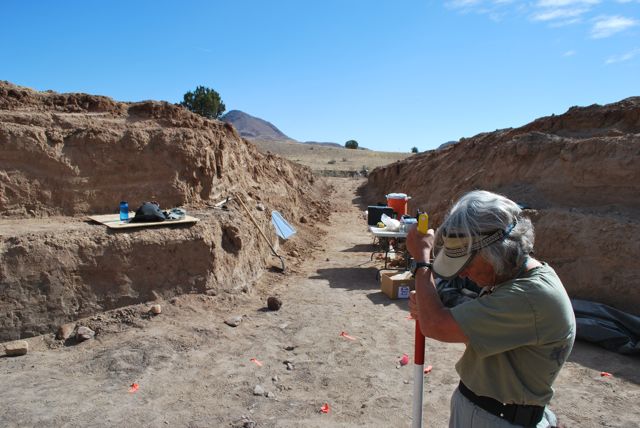
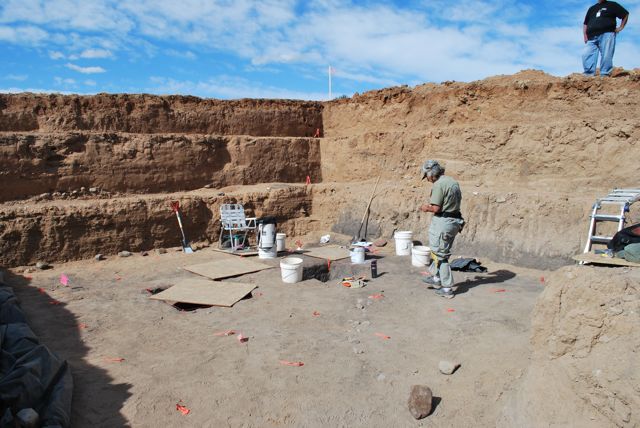
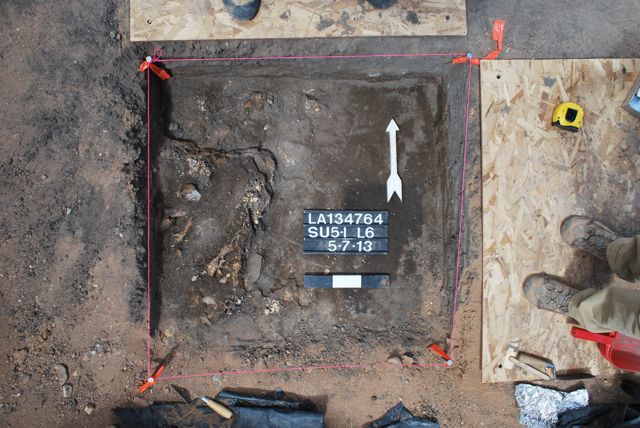
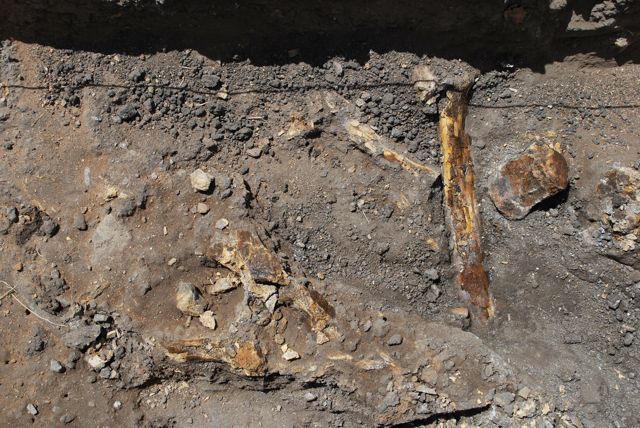
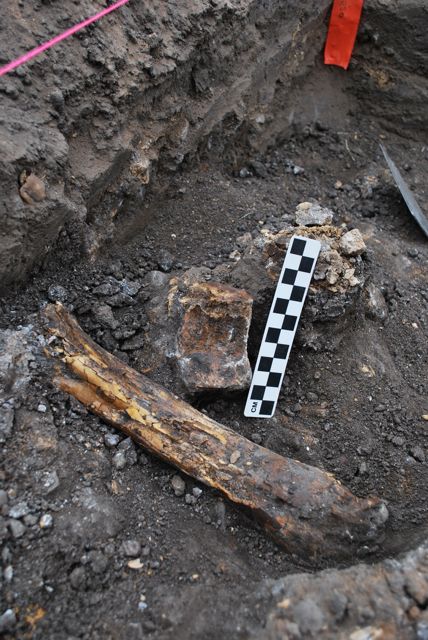
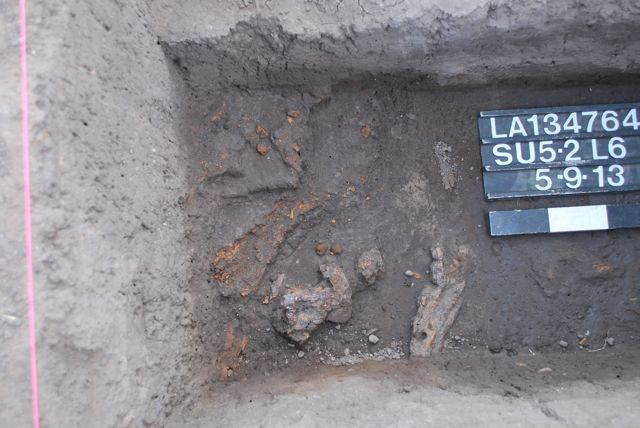 Old bonebeds are notoriously slow and difficult to excavate but, with an experienced team, remarkable progress was made over the short two-week window.
Old bonebeds are notoriously slow and difficult to excavate but, with an experienced team, remarkable progress was made over the short two-week window.
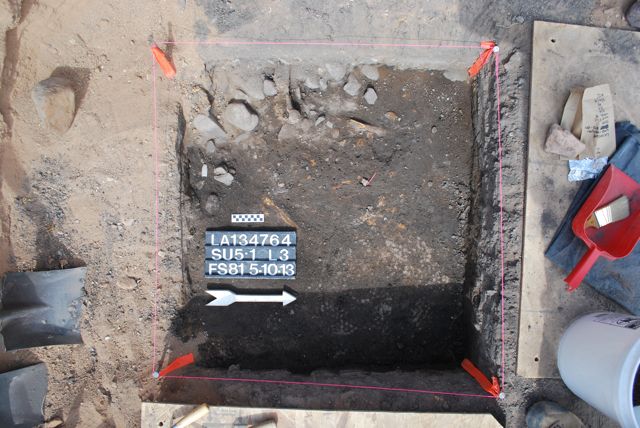 A common problem with bison kills is proving that they are, in fact, kills. To do this, something has to point toward human intervention. Luckily this occurred, in the form of a projectile point, visible in the above photo near the left edge of the above excavation photo. I was the lucky one here.
A common problem with bison kills is proving that they are, in fact, kills. To do this, something has to point toward human intervention. Luckily this occurred, in the form of a projectile point, visible in the above photo near the left edge of the above excavation photo. I was the lucky one here.
Above is a close-up field photo of the fine late-Paleoindian Eden Point it turned out to be. Fortunately, this point-type even fits the expected dates for the strata where it was found further reinforcing date from previous work.
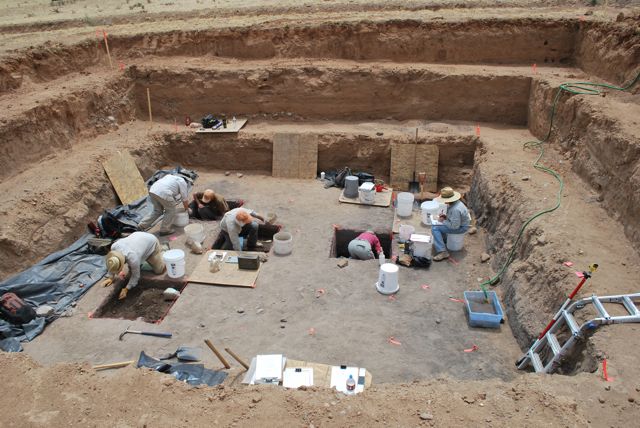 I was glad to be part of this exciting investigation and hope to make it back to this remarkable site in the near future. More information can be found HERE http://www.nmarchaeology.org/water-canyon.html.
I was glad to be part of this exciting investigation and hope to make it back to this remarkable site in the near future. More information can be found HERE http://www.nmarchaeology.org/water-canyon.html.

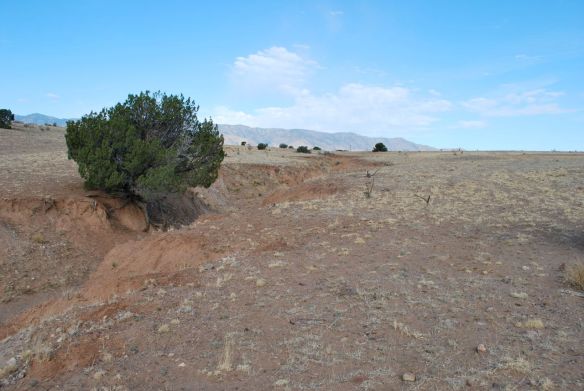
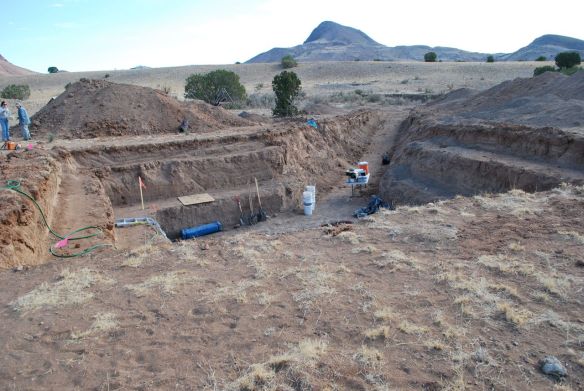
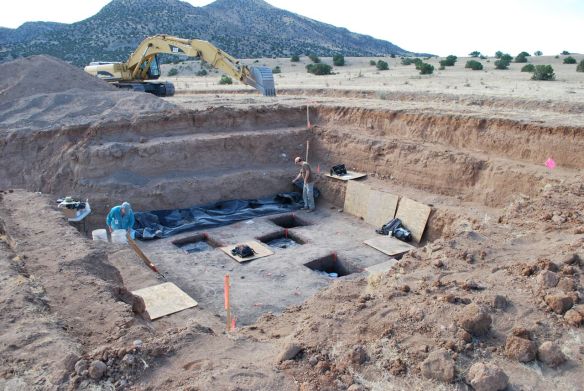
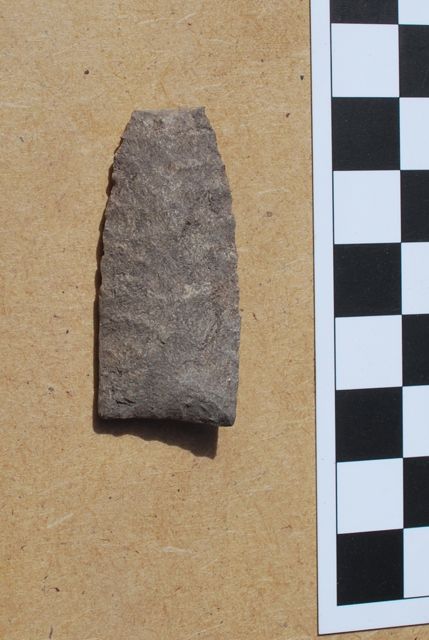
Reblogged this on Paleotool's Weblog.